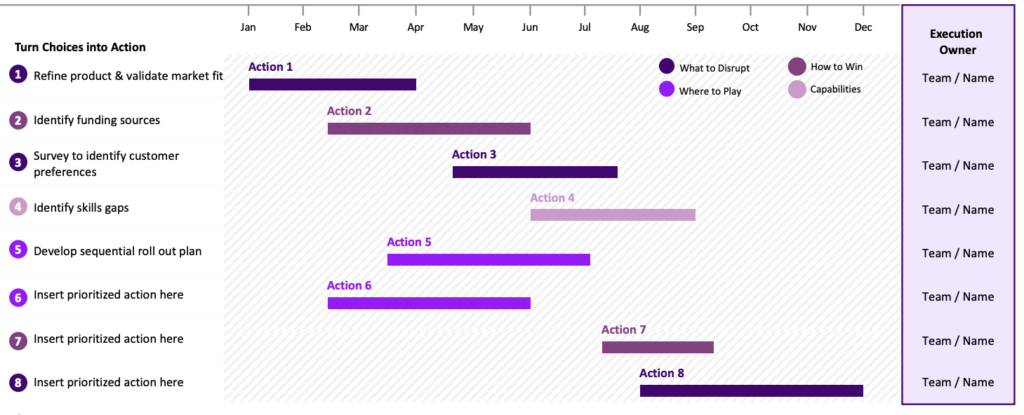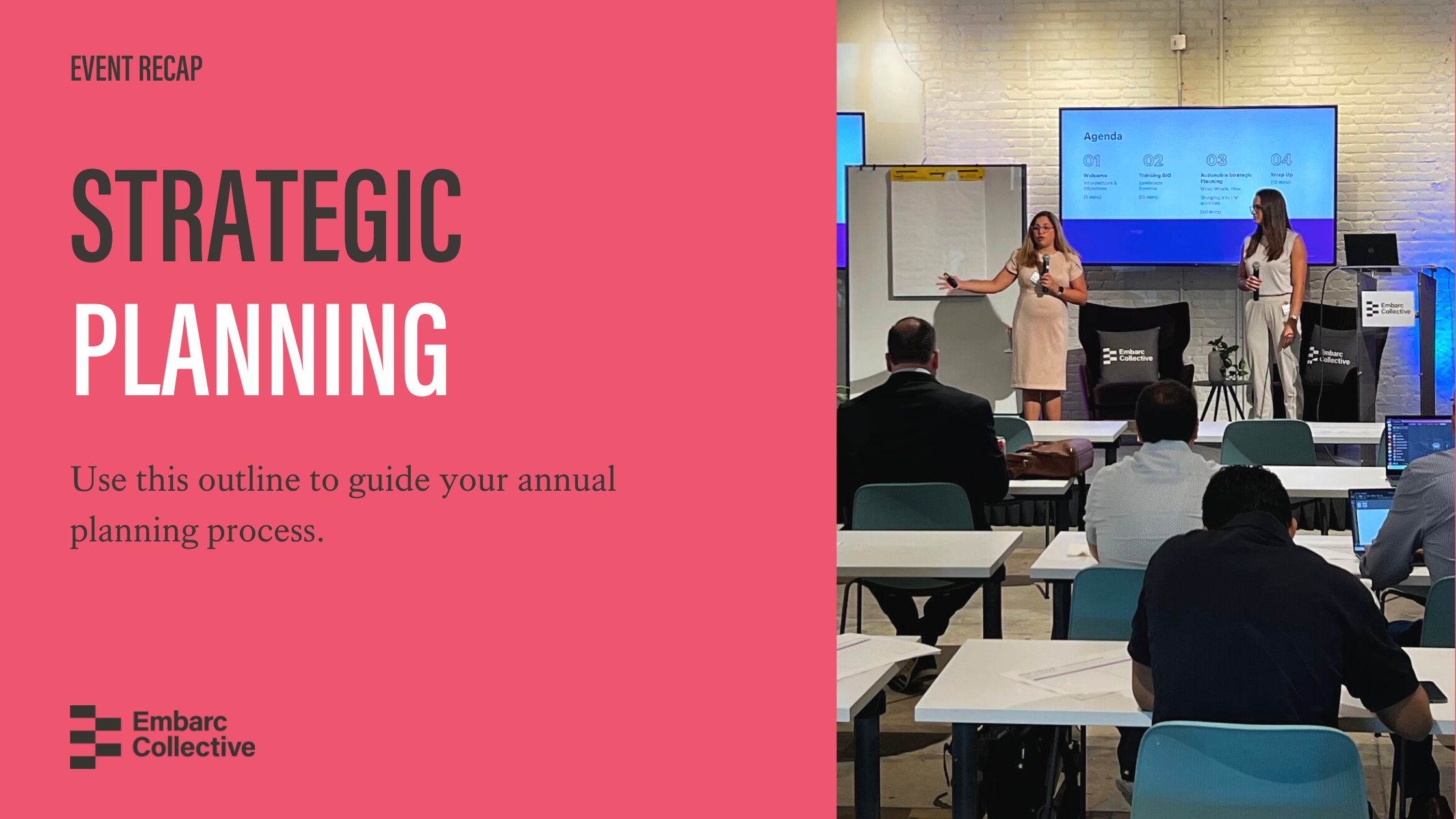Get the Weekly Collective
Learn about upcoming events and the latest startup news—delivered to your inbox weekly.
About The Author
Embarc Collective
Use this outline to guide your annual planning process
As we dive deeper into Q4, it’s an opportune time to reflect on your startup’s past year of growth and plan for what comes next. This is a critical practice for startups—to zoom out of day-to-day execution and make a deliberate effort to work on the business, instead of in the business.
To explore the topic of annual planning for early-stage companies, Embarc Collective collaborated with Accenture, a Fortune Global 500 consulting company, to lead a Strategic Planning Workshop for our community of 125+ member startups.
We’re highlighting the strategic planning outline from the workshop to help shape your startup’s focus for the year ahead.
REFLECT
Before building your plan, set aside time to reflect on your mission (why you exist), vision (what you believe), and values (what you aspire to be). This thought exercise helps align your leadership team on your company’s north star ahead of strategic discussions.
If you have a previous annual plan, start by reviewing it. How well did you execute against your goals? What were your learnings? Benchmarking your current progress can help you determine whether or not you are thinking big enough to achieve your future vision.
“Many entrepreneurs have a hard time thinking big as they believe that the way to mitigate the inevitable risk of starting a venture is to keep it small, tidy, and easy to get your arms around. This tendency gets in the way of scaling over the long term”– Danny Warshay, “See, Solve, Scale”
Tactical Takeaway: Revisit the best practices for creating and refining your mission, vision, and values using this guide by foundr.
PLAN
Now that you’ve refined your company aspirations, work backward to identify the actions needed to scale your organizational capabilities to meet your vision.
The building blocks of your strategic plan come from assessing opportunities to strengthen your value proposition, analyzing contextual factors that can impact your market position, and determining how to maximize the value of your customer base.
Tactical Takeway: Below are sample questions for your team to address.
- What products and what business model will create a competitive advantage?
- How can we create and defend our competitive market position?
- What key drivers are required to put our strategy into action?
- Do we have the talent, organizational structure, and governance to execute our plan?
ACTION
Finally, it’s time to put your plan into action. Once you’ve identified the key areas of focus for your next phase of growth, you can begin to:
- Prioritize a list of actions. Evaluating your list according to each item’s potential impact can help determine where to mobilize short-term vs longer-term.
- Create an execution timeline. Map your prioritized actions to a monthly timeline to serve as a roadmap for the year.
- Assign a team member. Designate the appropriate team member(s) to serve as execution owner for each action in their respective functions.
Tactical Takeaway: Here’s an illustrative example of taking action in practice.

This is an illustrative framework copyrighted by Accenture.
RESOURCES
For startups looking to dive deeper, check out these tactical resources to support your annual planning process:
- Simple Strategic Planning for Startups: Arthur Ventures
- How To: Strategic Planning: Pillar VC
- Annual Planning Tips for Startups: Sierra Ventures
- 4 Tips for Setting Your Company’s Annual Rhythm: OpenView Partners
Interested in gaining access to support for strategic planning? Nominate your startup for membership at Embarc Collective, Florida’s fastest-growing startup hub.
Thank you to Debbie Green, Ally Kopec, Delmary Salcedo, and Herve Patrick Koun at Accenture for making this workshop possible.
Related Articles

The Mind of a Builder: Ryan Serhant at Embarc Collective
Embarc Collective kicked off the week with a dynamic discussion, bringing together Florida entrepren...

Supercharge Your Leadership: Lessons From Six Leaders Who Transformed Their Startups Into Global Success Stories
Advancing one’s leadership style has been top of mind for the entrepreneurs a part of our communit...

Category Design with Kevin Maney
This week, Kevin Maney, Founding Partner at Category Design Advisors and co-author of Play Bigger, v...
Meet Our Members
Meet the Embarc Collective member community of driven entrepreneurs who are building bold, scalable, thriving companies in Florida.
